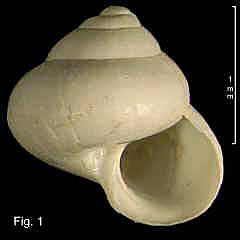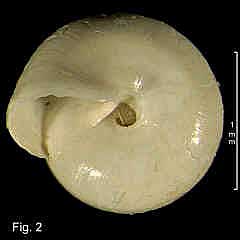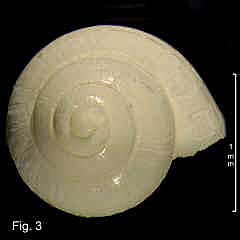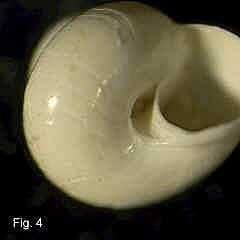|
|
|
|
|
Cirsonella carinata (Hedley, 1903) Description: Shell minute, trochiform, height about equal to width. Protoconch low, smooth, with well defined transition to teleoconch. Teleoconch up to 2¾ whorls. Whorls angled at periphery initially, rounded in mature shells. Spiral sculpture of very fine threads on periphery and below, becoming indistinct in larger shells. Umbilicus narrow, edged by callus ridge extending to anterior of aperture. Aperture nearly circular, peristome interrupted, joined by callus band on parietal wall; outer lip thin in immature shells, swollen externally in mature specimens; inner lip extended anteriorly. Shell colourless transparent when fresh, becoming opaque white with age. Size: Up to 1.7 mm high, 1.7 mm wide. Distribution: Endemic to Australia; Cape Byron, NSW, southwards and around southern Australia to South Australia, including Tasmania. Habitat: Known from 61-384 m. Common. Comparison: Cirsonella weldii is similar but larger, wider than high, and lacks the spiral threads and the spiral rib around the umbilicus. Synonymy: None Remarks: Whorls show a distinct angle at the periphery in immature shells, but become rounded as the number of whorls increases. The strength and extent of the fine spiral threads varies between specimens, becoming indistinct in larger shells, and is usually restricted to the periphery, but occasionally surrounds the umbilicus as well. The glossy exterior shell layer that caries the spiral threads is sometimes warn away, making the surface smooth and matt. Figs. 1-4: 30 km SW of Cape Everard, Victoria, 119 m (C.unreg) |



